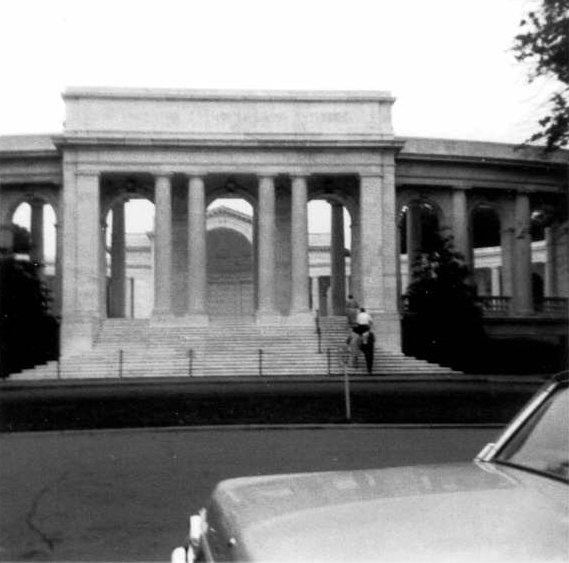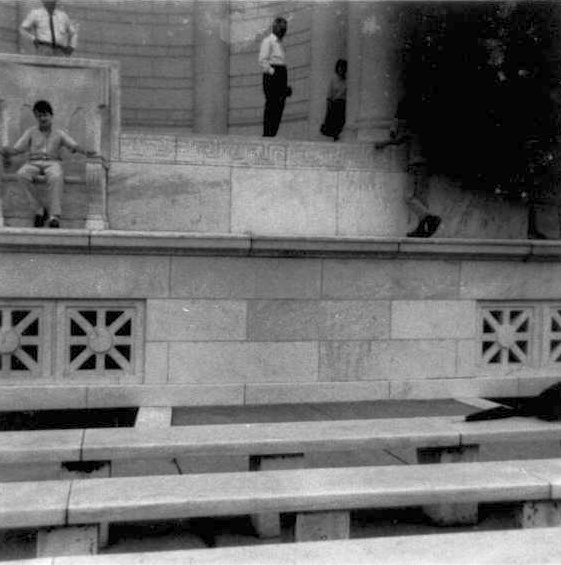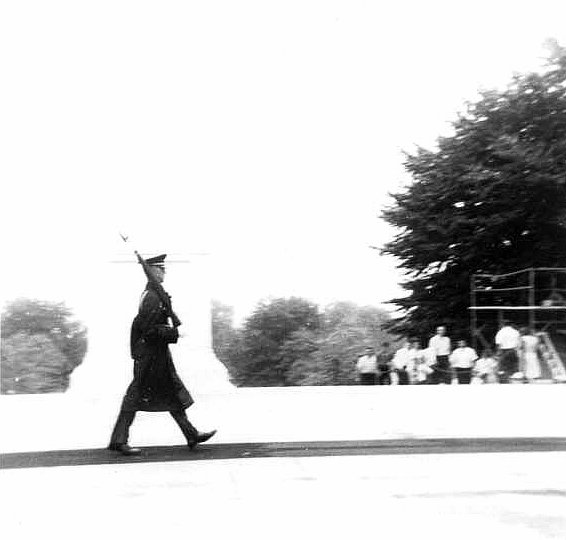![]()
The Charlotte News
Saturday, May 29, 1943
FOUR EDITORIALS
![]()
![]()
Site Ed. Note: The front page reports yet another raid in force by both the RAF and American Flying Fortresses on both Germany and on the German submarine bases along the coast of France, at St. Nazaire and Lorient. Between the raid Sunday night on Dortmund, dropping a record 2,000 tons of bombs, the raid on Duesseldorf two days later dropping nearly the same amount, and the one Thursday night on Essen dropping another 1,000 tons, the RAF had run up a record of 5,000 tons dropped on Germany in less than a week, a record for tonnage of bombs dropped during any single week thus far in the war.
That record added to the smashing success of the busting of the Moehne and Eder dams in the Ruhr Valley the previous week.
Another force of a hundred American Flying Fortresses had bombed Leghorn on the northwestern coast of Italy, 160 miles north of Rome, a complement not before seen over the Italian peninsula. It was the first attack of the war on Leghorn, site of the Ansaldo shipbuilding works which was central to Italian submarine manufacture and also served as a port for submarines.
At the same time, two dozen American Liberators dropped 80 tons of bombs on Foggia near the Adriatic coast of Italy, 80 miles east of Naples. Both targets suffered heavy damage.
London newspapers speculated that the Allied war with Italy may have begun with this American raid at Leghorn.
The map shows the location of both Leghorn, labeled by its Italian name, Livorno, and Foggia.
Leaflets were also being dropped with the bombs over Italy, urging Italians to surrender to the Allies, that they would be treated well, that their fate with Germany was underscored in high relief in the experience in North Africa when the Italian soldiers routinely were abandoned by the retreating German forces.
European newspapers, especially those in Italy, were rife with stories of emergent Italian preparedness against the expectation of imminent invasion by a large Allied force reported to be congregating off the coasts of Morocco, Algeria, and Tunisia, set to cross the Mediterranean perhaps within days.
A retired Army officer, Colonel Conrad Lanza, speculated to a reporter on the ten roads which the Allies might follow to make an approach on Germany. Roads 5, 8, and 9 were those ultimately chosen. As he predicted, none of them would be easy.
He suggested that the most effective raid would be a massive landing in force involving millions of men, from several points.
The news from Attu indicated that on Thursday the Americans took Fish-Hook Ridge, the most important remaining height held by the Japanese, confining the last remnant of enemy troops left alive on the island to an area three to four miles square. The Ridge itself was located above the clouds and, to be reached, had required the scaling of 60-degree cliffs in the face of heavy enemy fire.
The German news agency DNB continued to claim a large Russian offensive of 150,000 being launched in the Kuban River Valley area toward the Kerch Strait. So far, however, this story, first announced on Thursday, had not been confirmed by Russian reports.
The central War Mobilization Committee of the War Mobilization Board, of which James Byrnes had been given the chair the day before, would be comprised of Secretary of the Navy Frank Knox, Secretary of War Henry Stimson, Chairman of the Munitions Assignment Board, Harry Hopkins, Chairman of the War Production Board, Donald Nelson, and the successor to Mr. Byrnes as head of Economic Stabilization, Federal Court of Appeals Judge Fred Vinson--subsequently to be given the chair as Chief Justice of the Supreme Court in 1946, appointed by President Truman upon the death by the chair of Harlan Stone. Many in Congress wanted this Committee to act as a War Cabinet.
No doubt, its bipartisan nature, both Stimson and Knox being Republicans, and the general acceptance of James Byrnes as non-partisan in his approach, contributed to the desire.
On the editorial page, "The Strap" discusses the introduction before the Senate by North Carolina Senator Josiah W. Bailey of a proposed constitutional amendment to limit the President to two terms in office in occupation of the chair. The proposed amendment would not affect the 1944 election.
The piece, accurately, predicts a long haul for the amendment but also believes that the ensuing debate on it would serve as a soapbox sounding board for every Republican disgruntled over the claimed abuses of the Roosevelt Administration and for the echoing chorus from those across the land who believed that the country had gone off course when FDR was elected to an unprecedented third term. They would likely combine with the Western and Southern interests, both Republican and Democrat, who were always suspicious of the extension of Executive power from Washington, no matter the cause, and provide the amendment a lengthy ride through Congress.
It would be the case. The 22nd Amendment was passed by the Congress in early 1947 and ratified four years later. In addition to limiting service to two elected terms, it limits a President who assumes the office during the term of his predecessor to only one elected term, unless the service to completion of the former Presidentís term does not exceed two years. Thus, the maximum term any United States President may serve under any conditions is ten years during his or her lifetime.
Many have criticized the impact of the Amendment as hamstringing the efficacy of the Office, causing the presidency to reach essentially lame duck status at or shortly after the beginning of the second term. Of course, favor or opposition to the Amendment might turn on which of the two parties appears to have favor among the voters in the country at any given moment.
It is important to bear in mind that the Amendment was passed in the wake of the death of one of the most popular Presidents in U.S. history, both during and after his twelve years in office. Its wisdom must be gauged always in that light, but counterpoised also with the fact that a significant minority of the country at the time believed that the New Deal had been inimical to democracy and that the advent of U.S. involvement in the war had been the result of F.D.R.'s insouciance, not properly minding the ship, no matter how nonsensical both propositions become when viewed through the lens of the entire period on a continuum from World War I through World War II.
But the gullible, always of short attention span, if attention was ever theirs in the first instance, became increasingly so the further behind them in the fast pace of daily life became the Depression and the War.
When one looks, however, at the history of the case, the result is clear: the problems, both domestically and internationally, came from the twelve dauntlessly flowing, sleepy, medicine-ball years of the Harding-Coolidge-Hoover Administration, taking a laissez-faire approach to the economy, both domestically and on the world stage, and an isolationist view of international relations.
While that is not to suggest that America was by any means solely responsible for the creation in Italy of Mussolini, in Germany of Hitler, and in Japan of Tojo, it is to suggest that a more active policy, both economically and in international policing via the League of Nations would likely, based on history subsequent to World War II, have averted both the Depression and the Second World War.
Yet, as always, twenty-twenty hindsight is cheap and easy; the United States had just ended its bloody 19-month involvement in the War to End All Wars, Prohibition had gone into effect in 1919 just when the country wanted to play, and so play with a vengeance it proceeded to do until it was run practically into the ground.
"Installment" reminds that despite the relatively low count of 70,000 Allied casualties during the El Alamein to Tunisian campaign, of whom only 2,100 were Americans killed in action, against 320,000 Axis casualties, most of whom were prisoners, the reason for the disparity was that the Axis was fighting away from its home shores and with little hope of winning from the moment Rommel began his long retreat on October 19.
The carnage, the piece grimly predicts once again, as it had several times reminded in recent months, would be sickeningly increscent when the fighting began on European soil.
Yet, it also optimistically offers that the superiority of air power being consistently demonstrated by the Allies over France, Germany, and Italy during the previous year had gone far to soften the defenses of the Axis, making invasion by ground troops less onerous than it might otherwise have been.
Raymond Clapper reports that scuttlebutt among industrialists returning from Germany to Sweden had it that production was being crippled both in Germany and in the occupied countries by the bombing campaign of the Allies, that it was significant that the German soldiers had laid down their arms in Tunisia before being completely exhausted of ammunition, that the rate of production of replacement planes could not maintain pace with the number being lost, all combining ultimately to spell doom for the Reich.
Consequently, says Mr. Clapper, the best defensive ploy left to the German state was that which it was practicing now regularly on the German people: the line that defeat would mean annihilation by the Allies, that both Britain and the United States intended mass executions or sterilizations of the Germans after the war, as evidenced, they proclaimed, by the wanton bombing of cities; that it was "Victory or Bolshevism".
Of course, what the Germans were doing was projecting their own sins onto the Allies, teaching the good Germans that what they themselves had done to their captive populations and to the Jews, the Allies would do to them in retribution.
Well, it probably should have been thus, but, nevertheless, nothing of the sort occurred. The stupid little Nazis who gave rise to Hitler and his thug minions were allowed back into the brotherhood and sisterhood for the most part, for better or worse. Consequently, some of them, with little if any reform, still, as for nearly seven decades, thrive among us, their quaint little Nazi ways passed down from father and grandfather to the little sonny or grandsonny Nazi.
Dorothy Thompson continues her examination of the demise of the Comintern. She suggests that Stalin viewed the Munich Pact as a threat of alliance between the Western democracies and Hitler against Russia, that the belief had motivated his desire to split the Nazis from the capitalist countries by his mutual non-aggression pact with Germany in August, 1939, just two weeks before Hitler rolled his panzer divisions in Blitzkrieg into Poland on September 1. The Comintern's task therefore persisted: to roil support in other countries for Stalinist Russia while seeking to stultify attempts aborning of any hint that the West would combine with Germany or any other powerful military autocracy which might come to be in Central Europe or in Asia to attack Russia.
This paranoia of course was driven by the likes of Martin Dies and H.U.A.C. who saw a Communist under every tree in America and viewed the Soviet Union as an evil, godless empire, far the greater menace than good old Adolf and Benito, alone or in combination--as both of them of course were simpatico with the aims of Mr. Dies and his ilk anyway.
But despite the largest contingent of Communists on foreign soil in Europe having been in Germany, Ms. Thompson continues, when Germany attacked Russia June 22, 1941, the Comintern served no purpose, the German people uniformly supporting their homeland, not, as presupposed Stalin they might, turning on Hitler with internal revolt. Likewise, the largest of all Communist contingents outside Russia was in China; yet, the Chinese uniformly fought Japan, drawing no distinction between the Communists and the Chinese Nationalists led by Chiang Kai-shek in determining their self-interest in protecting their homes against a foreign invader to their country.
These examples set the theme of nationalism, not party identity, as the linchpin for providing the psychological thrust to the war effort. She points out that Stalin could have fought a class war in Russia, the proletariat versus the industrialists, but instead chose a nationalist war theme, as it proved the only effective tool for motivating the fighting spirit among all Russians, appeal to the concept of protection of homeland, not appeal to preservation of Party fealty.
She concludes that the fate of the Comintern was sealed finally with the landings by the Allies in west North Africa in November, that it was this singular event which melded the Russian fate with that of Britain and the United States and dispelled for the duration of the war Stalin's belief that the Western democracies would conspire to ally with Germany against Russia.
A piece out of The Charlotte Labor Journal analyzes the implications of the story on the Big Red House on R Street in Washington, site of reportedly orgiastic parties held by lobbyist John R. Monroe for Washington military and government officials to acquire favorable treatment to clients desirous of the swag from war contracts, as set forth on the front page of The News May 5.
It opines that Congress appeared ready to soft-peddle the problem thus exposed, apparently for its threat of revelation of too many Congressmen and staffers, hence the determination, after much huffing and puffing, when Mr. Monroe refused to testify before the House Military Affairs Committee, that perhaps, after all, they could not muster the power to find him in contempt of Congress. (Whether he pleaded the Fifth Amendment privilege against self-incrimination, which might in fact have protected him appropriately under the law, was not indicated.)
Meanwhile, continues the piece, Mr. Monroe had provided an exclusive story to The St. Louis Post-Dispatch, indicating that the patronage of his services and attendance at the social gatherings he held at the Big Red House on R Street came not from a bloc comprised of seekers of war contracts or any other booty, but rather were none other than a small, wealthy set of Republicans and insurgent Democrats bent on seeing to it that FDR did not have a fourth term in the White House. He identified them generally as including wealthy publishers from New York (William R. Hearst) and Chicago (Robert McCormick), and an automobile manufacturer (Henry Ford), "who hate that so-and-so in the White House".
Mr. Monroe's explanation provided in the May 5 report, however, had been that the gatherings were merely reciprocal of social entertainment provided to him by his guests who happened to include various Washington officials.
So, what was the nature of the Big Red House on R Street? The mystery persists.
In any event, with the bells again flashing their toll across Britain, the mine crisis in the United States appearing nearly past, and along with it, most other labor strife threatening in the previous month to raise its head and interfere significantly with war production, with Memorial Day 1943 at hand as the Allies prepared for their landing en masse on the Continent for the first time in three years since the departure of the British at Dunkerque in late May, early June, 1940, we are reminded of this one.
![]()



![]()
![]()
![]()